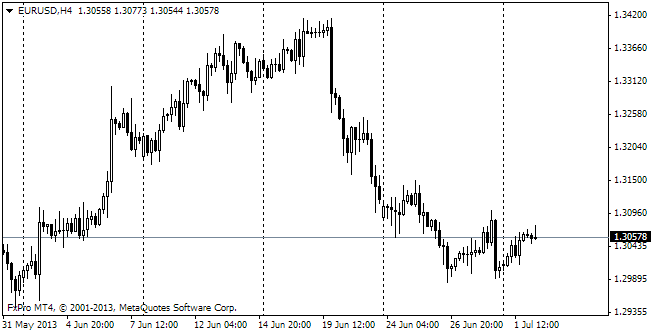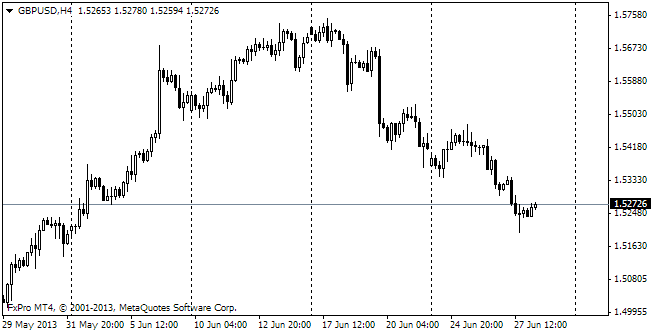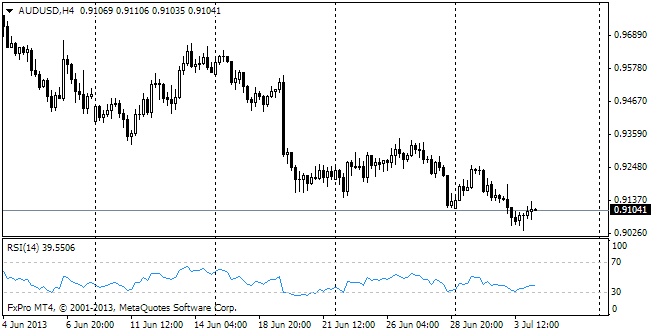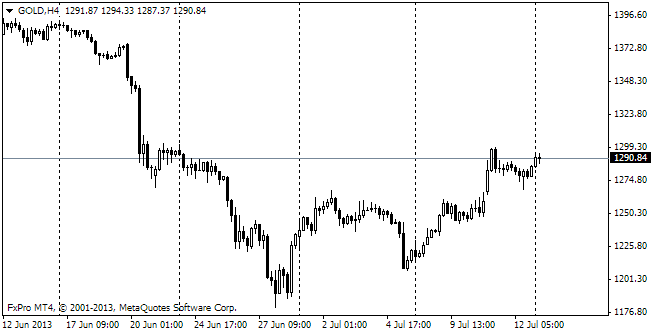EUR/usd
Stock exchanges are not willing to retreat. Inspired by the Fed's comments that the stimulus rollback in the near future is not a settled question, traders and investors have shifted their attention to the corporate reports. The recent statistics have been rather good since the expectations were not very high. The messages about good incomes from big corporations liven up the rally, which has already brought several closes at the record levels. Now we only have to wait for the renewal of the high hit on May 22 in S&P 500. Against such a background eurusd feels better than a couple of weeks ago, but still lags much behind the stock exchanges in its dynamics. There's no upward rally in the pair and the latter got support only near 1.30, though before that against the background of Bernanke's speech the euro had gone up to 1.32 against the dollar. Since the dollar is weak, the pair has a chance to get again above 1.30 and, probably, even fight for 1.36 and try to break through 1.40 by the end of the summer. But the Fed's dovish comments alone are not enough for growth. We also need good news from Europe. And there Cyprus and Greece hardly keep up with the requirements to be observed for getting the bailout. In Portugal there was no lack in the political will on the part of the ruling coalition, but it lost support and broke down because of the displeasure with the austerity terms. German exports are no longer that favourable and Italy keeps suffering unemployment growth. So, upon the whole the economic improvement in the euro zone in the second half-year may fall short of the earlier expectations.

GBP/USD
Just as the euro found support at 1.30, the cable has come in demand on the dips below 1.5080. In the meantime, against the euro the British pound remains at 0.8460 – the top of the trading range of the recent months. The uptrend in the pair is getting clearer and clearer, it may target at 0.8750- 0.8800, i.e. the yearly highs. It is connected with the expectations of active measures from the BOE in the coming weeks and months. It's funny that for all that the British statistics are better than in the euro zone. This contrast in the degree of the governmental intrusion in the economy is right the thing that constitutes the difference between the Austrian school and the Anglo-Saxon economic model.

AUD/USD
The Australian dollar can't climb out of the pit, which was dug not without participation of the Australian CB. Despite the overall negative background for USD, the aussie got weaker against the US currency. It even contrived to drop below 0.9000, that is to the levels which haven't been observed since September 2010 – there the pair seems to have hit the bottom. On the poor stats from China (decline in imports) traders and investors again stake on the possible rate cut at the RBA's meeting in August.

gold
Gold is gradually coming off the lows of the last month's end. According to Bloomberg, hedge funds are opening lots of long positions in this instrument trying to purchase Gold at the low levels. In our opinion, the current levels are really attractive, but for the short term. When the Fed again speaks about tightening of the policy, Gold will get another blow.
